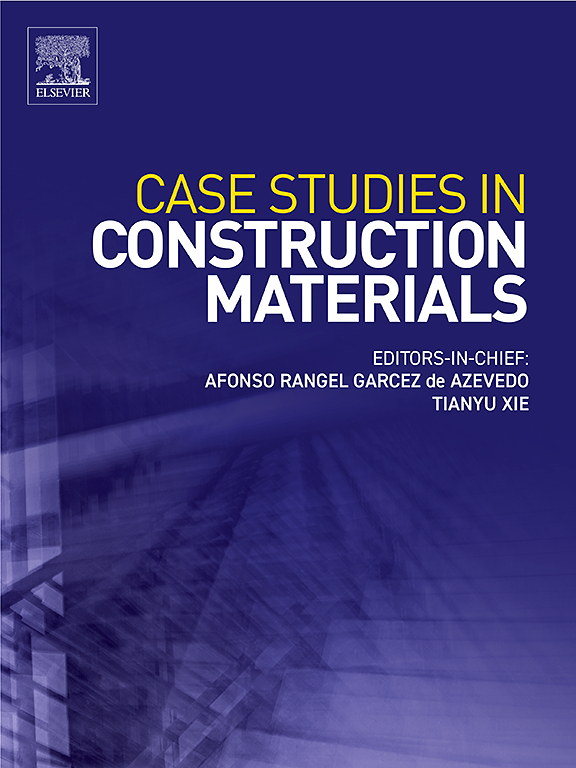Influence of calcareous sand powder and water environment on macro- and micro-properties of ferroaluminate cement
IF 6.6
2区 工程技术
Q1 CONSTRUCTION & BUILDING TECHNOLOGY
引用次数: 0
Abstract
The deterioration of engineering structural performance caused by seawater erosion, along with the scarcity of conventional construction materials, are significant challenges in contemporary island construction. Therefore, this study investigates the macro- and micro-properties of ferroaluminate cement mixed with calcareous sand powder (FAC-CSP) in three distinct water environments (FF: Freshwater mixing and immersion, FS: Freshwater mixing and seawater immersion, and SS: Seawater mixing and immersion) and elucidates the synergistic mechanism among the components. The results demonstrate that CSP alters the electrochemical properties of specimens in both FS and SS environments, while it does not significantly affect specimens in the FF environment. Additionally, CSP notably increases the resistivity of specimens at the later stages of hydration. Although CSP leads to a reduction in the mechanical properties of the specimens, it contributes to strength enhancement during the later stages of hydration. Seawater immersion significantly improves the strength of the specimens, compensating for the strength loss induced by CSP. Specimens in FS and SS environments exhibit higher ettringite content, and the presence of CSP promotes more complete hydration of FAC. Seawater immersion significantly increases the bound water content in the specimens. The adsorption of CSP particles and the ionic contribution of seawater stimulate the formation of additional hydration products around the CSP particles. This process fills the gap between the CSP particles and the specimen matrix with hydration products. These findings offer micro-scale insights into the roles of CSP and seawater in FAC hydration.
石灰砂粉和水环境对铝酸铁水泥宏微观性能的影响
海水侵蚀导致的工程结构性能恶化,以及传统建筑材料的稀缺,是当代海岛建设面临的重大挑战。因此,本研究考察了铝酸铁水泥掺钙砂粉(facc - csp)在三种不同水环境(FF:淡水搅拌和浸泡、FS:淡水搅拌和海水浸泡、SS:海水搅拌和浸泡)下的宏观和微观性能,并阐明了组分之间的协同作用机制。结果表明,CSP改变了FS和SS环境下样品的电化学性能,而FF环境下CSP对样品的影响不显著。此外,CSP显著提高了水化后期试件的电阻率。虽然CSP会导致试样力学性能的降低,但在水化后期阶段,它有助于强度的提高。海水浸泡显著提高了试件的强度,弥补了CSP引起的强度损失。FS和SS环境下的试样钙矾石含量较高,CSP的存在促进FAC水化更完全。海水浸泡显著提高了试样的束缚水含量。CSP颗粒的吸附和海水离子的贡献刺激了CSP颗粒周围额外水化产物的形成。该过程用水化产物填充CSP颗粒和试样基体之间的空隙。这些发现为CSP和海水在FAC水化中的作用提供了微观视角。
本文章由计算机程序翻译,如有差异,请以英文原文为准。
求助全文
约1分钟内获得全文
求助全文
来源期刊

Case Studies in Construction Materials
Multiple-
CiteScore
7.60
自引率
19.40%
发文量
842
审稿时长
63 days
期刊介绍:
Case Studies in Construction Materials provides a forum for the rapid publication of short, structured Case Studies on construction materials. In addition, the journal also publishes related Short Communications, Full length research article and Comprehensive review papers (by invitation).
The journal will provide an essential compendium of case studies for practicing engineers, designers, researchers and other practitioners who are interested in all aspects construction materials. The journal will publish new and novel case studies, but will also provide a forum for the publication of high quality descriptions of classic construction material problems and solutions.
 求助内容:
求助内容: 应助结果提醒方式:
应助结果提醒方式:


